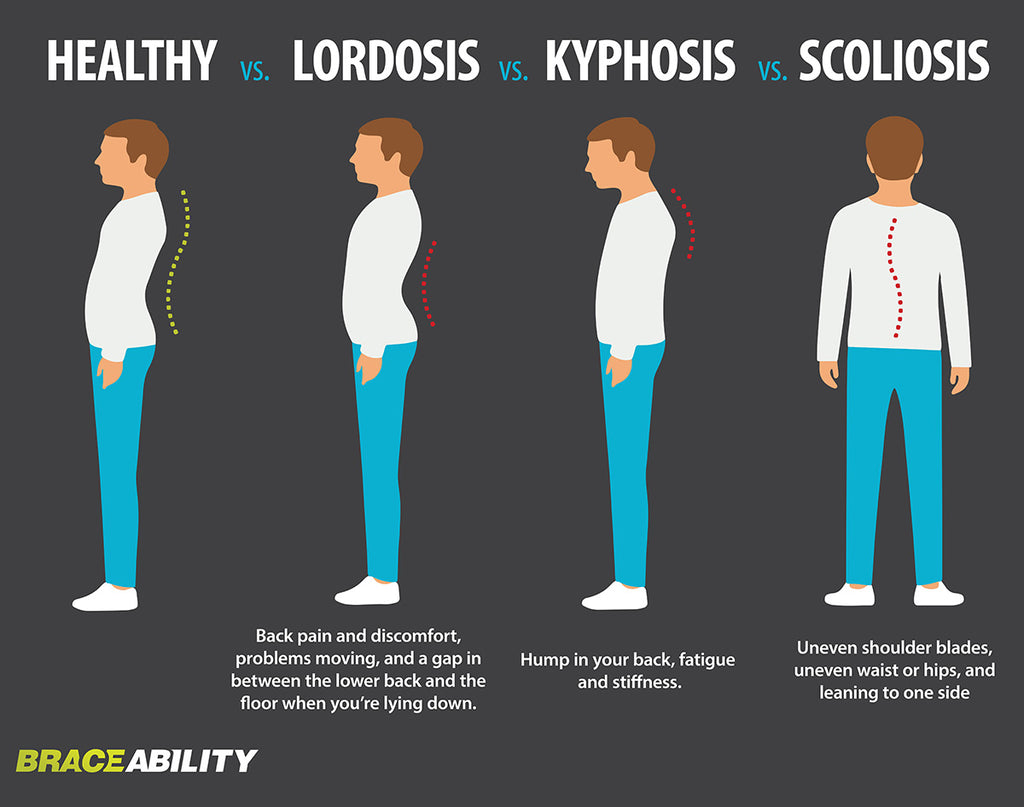Do You Have a Curved Spine?
Have you noticed you or someone you know has a lower back having a larger than normal spinal curvature? Or maybe you’ve been experiencing mild back pain and observed that your back seems extraordinarily rounded. You most likely have one of the common spine curvature disorders, these disorders pertain to abnormal curvatures of the spine. The spine, or backbone, is made up of stacked vertebrae and discs. A normal spine has a slight and gentle curve to it. Viewed from behind, the spine should look like it runs straight down the middle of your back. If you have a spine curvature disorder the normal curves of the spine are much greater than they are supposed to be. The most common spine disorders are scoliosis, kyphosis, and lordosis. Continue reading to learn more information on each of the three disorders in order to figure out which you may have, and potential treatment options
What Spinal Curvature Disorder Could I have?

Kyphosis Symptoms: |
Scoliosis Symptoms: |
Lordosis Symptoms: |
| I’ve noticed that my back seems rounded. I experience fatigue and mild back pain. Sometimes the area around my spine is tender and sore. Occasionally I may even have difficulty breathing. | I’ve noticed an abnormal curve of my spine or someone else's. My clothes appear to not fit as well as they used to, seeming uneven. | I’m experiencing pain in my back and spine that makes moving difficult. When lying on my back on a hard surface, there is a large space beneath my lower back and the surface. |
Kyphosis of the spine: |
Scoliosis of the spine: |
Lordosis of the spine: |
| Kyphosis of the spine is a common condition resulting in an exaggerated forward rounding of your upper back, or thoracic region. A normal spine curvature would be 20-50 degrees, kyphosis would be a curve greater than 50 degrees. This curvature causes you to hunch over and appear like you are slouching. Kyphosis is most common with older women because they are more likely to suffer from osteoporosis. Osteoporosis weakens the spinal bones, which in return leads to the development of kyphosis. | Scoliosis is a condition of the spine that causes it to curve to the side. The curve can make the spine look like the shape of an “S” or “C”. It can curve at any point in the spine, but most commonly the thoracic and lumbar regions. Most often the cause of scoliosis is unknown. It is most common within adolescent girls. There are many different forms of scoliosis including idiopathic (cause is unknown), neuromuscular (associated with diseases like cerebral palsy), and syndromic (associated with diseases like myopathic dystrophy). | Lordosis of the spine is also commonly known as “swayback”. It’s a condition in which the spine and the lower back have an excessive curvature. There are natural curves in the spine, when lordosis occurs the lower back's natural curve is much greater. The curvature of the spine that occurs from lordosis is usually visible, often forming a “C” like shape. A person with lordosis may appear to be sticking out their stomachs or buttocks. |
Causes of Kyphosis: |
Causes of Scoliosis: |
Causes of Lordosis: |
|
Kyphosis can be caused by a variety of different health problems including:
|
There are a variety of factors that may cause scoliosis including:
|
Often the cause of lordosis is unknown usually appearing in children. Other potential reasons include:
|
Treatments of Kyphosis: |
Treatments of Scoliosis: |
Treatments of Lordosis: |
|
Treatment options include:
|
Treatment options include: If you think you or someone you know has scoliosis consult with a doctor right away. Treatment options for scoliosis include medical braces and surgery. |
Treatment options include:
|











